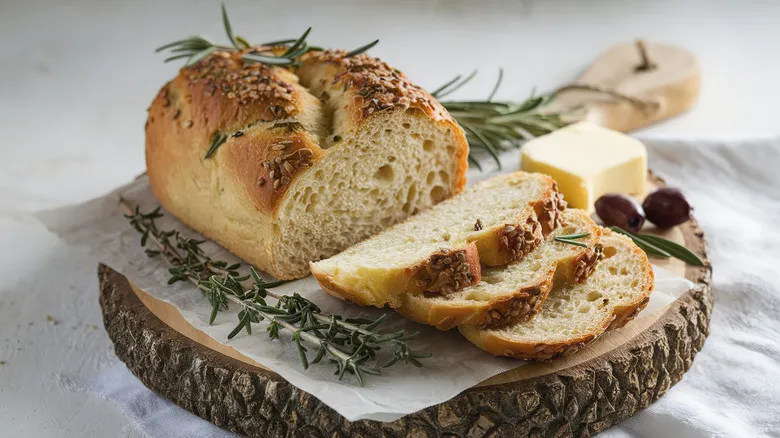Identifying and sourcing fresh herbs
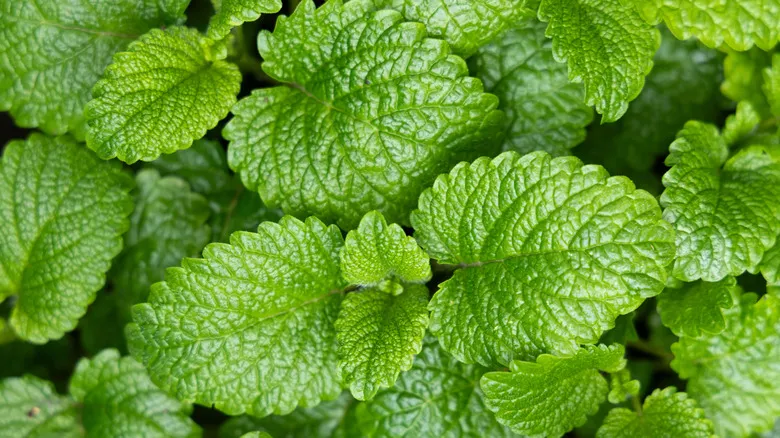
Fresh herbs are typically green (or green-gray, depending on the type), often still attached to their stems, and not dried. They differ from dried herbs in several key aspects. "Fresh herbs should appear vibrant and crisp, free from any yellowing, browning, or wilting," explains Julia Chebotar, a blogger at Health Chef Julia and a champion on Food Network's "Chopped." "The aroma is also a clear indicator — gently rub a leaf between your fingers, and it should emit a bright, unmistakable scent." Once you experience the difference between lackluster old herbs and freshly harvested ones, you'll never need convincing again.
"For sourcing, I suggest checking out your local farmers market for the freshest and most flavorful selections," Chebotar advises, noting that you should steer clear of herbs packaged in plastic clamshells whenever possible. Additionally, cookbook author Jessie-Sierra Ross of Straight to the Hips, Baby mentions, "Many common herbs are simple to grow at home, whether indoors or outdoors: basil, thyme, dill, parsley, chives, and cilantro flourish when potted and placed in a sunny spot on your counter."
Since fresh herbs can be quite pricey if you don't cultivate them yourself, why not give it a shot? If you're short on indoor space, consider an herb garden starter kit, which usually includes seed packets, pots, and the necessary tools to create a windowsill garden. If you have some outdoor space available, all you need are high-quality seeds to grow fantastic herbs. Regardless of your choice, Ross emphasizes, "Always ensure you purchase your herbs from a reliable source that avoids harmful growing methods, such as harsh chemical pesticides or industrial fertilizers."
What kinds of baked dishes call for fresh herbs?
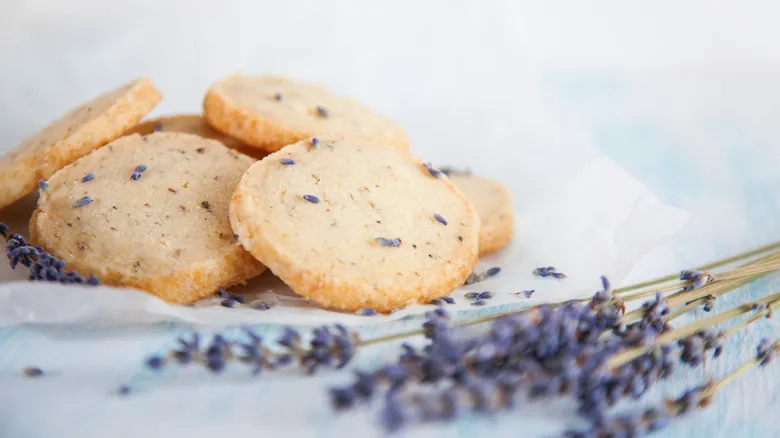
If you're interested in incorporating fresh herbs into your baking, you're in for a treat. While most home cooks are accustomed to using dried herbs in their cooking, fresh herbs can also enhance a variety of baked goods. Consider adding them to pizzas, breads, cakes, muffins, biscuits, and cornbread. You can even mix them into meat fillings for certain baked items, often sautéing them beforehand (think sausage stuffing or duxelles).
The possibilities are endless, and many chefs share this sentiment. Jessie-Sierra Ross notes, "Fresh basil is stunning when sprinkled on a crispy pizza, but it also shines when blended into a pastry, like a strawberry-basil scone." She also suggests creating a beautiful galette—a rustic pie—using a round of buttery pastry filled with fresh thyme, savory goat cheese, and ripe tomato slices. Some herbs pair particularly well with certain flavors; for example, rosemary complements citrus, especially lemon.
Alex Mazzucca and Cara Duerr offer additional inspiration with ideas like fig scones, chive biscuits, and lavender blueberry layer cake. Julia Chebotar emphasizes that "Fresh herbs add a delightful twist to savory baked goods such as focaccia, biscuits, or savory muffins." To truly elevate your dish, it's essential to choose herbs that complement the existing flavors, resulting in "a balanced, aromatic outcome," she advises.
Wash herbs immediately and store them properly
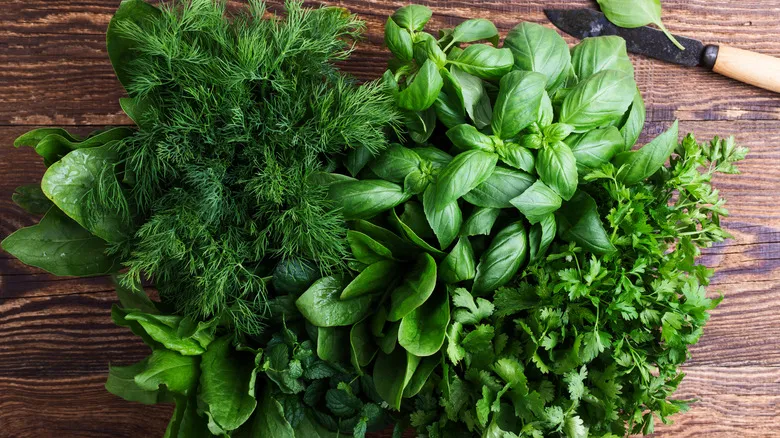
Many people bring herbs home and promptly toss them into a crisper, sometimes in a bag and sometimes not (I admit, I’m one of them). However, this isn’t the ideal method for keeping them fresh. Instead, it’s best to clean, dry, and store them properly upon arrival. Julia Chebotar advises, "Gently wash herbs under cool running water, then dry them thoroughly using a kitchen towel or salad spinner." After that, they’re ready for storage, which varies depending on the type of herb. This step is crucial, according to Jessie-Sierra Ross, to prevent contaminants: "Like other fresh produce, herbs can carry trace amounts of dirt, organic pesticides, or even E. coli if you don’t take the necessary precautions."
"While all fresh herbs can be kept in the refrigerator, some maintain their flavor (aromatic oils) better at room temperature," Ross explains. "Woody herbs such as rosemary, thyme, and oregano thrive when wrapped in a damp paper towel and stored in the fridge. Basil can be stored similarly, but it will be even more flavorful if you treat it like a bouquet." To do this, wash and dry the basil, then trim the ends of the stems. Place them in a mason jar or another small container with a little water, and keep them on the counter. If you avoid direct sunlight, they can last up to 10 days.
Basil isn’t the only herb that benefits from this method, according to Alex Mazzucca and Cara Duerr. Cilantro and parsley also respond well to the bouquet treatment.
Prep herbs correctly

Herbs require different preparation methods based on their variety, intended use, and the timing of their addition to baked goods. Typically, finely chopping herbs helps to maximize their flavor release, although this isn't always necessary. "Finely chop woodier herbs for even distribution," advises Julia Chebotar, highlighting thyme, rosemary, oregano, and sage as prime examples. In contrast, she notes that "softer herbs can often be torn or used whole." Herbs like basil, mint, cilantro, parsley, and dill are tender and flavorful, making them suitable for use without mincing.
Choosing the right technique is crucial, especially when using herbs as a garnish. Jessie-Sierra Ross warns that cutting delicate green herbs like basil and mint with a steel blade can bruise them, leading to dark discoloration that detracts from the fresh appearance of your fruit salad, cake, or bread. If you’re not using them whole, it’s best to gently tear them by hand to the desired size.
If you have surplus herbs that you won’t be freezing immediately, consider preserving them using the ice cube method. This way, you’ll always have herbs ready for your next culinary adventure. While freezing can compromise the structural integrity of plant cells, making it unsuitable for herbs intended as garnishes, it’s an excellent way to store them for future baked dishes.
Choose the correct herbs for extensive cooking
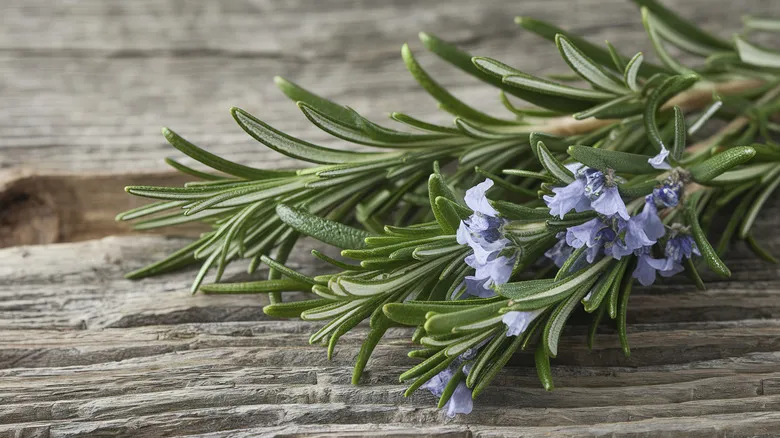
Many individuals are uncertain about the best time to incorporate fresh herbs while cooking. The essence of fresh herbs lies in their vibrant flavor, so subjecting them to intense heat may seem counterproductive—and often, it is. According to Alex Mazzucca and Cara Duerr, "When using herbs, the more heat-resistant varieties are the sturdier ones like rosemary, thyme, or oregano. We suggest adding more delicate herbs such as basil or cilantro as a finishing touch after the dish is cooked."
Jessie-Sierra Ross concurs, stating, "Tender herbs with thin leaves, like basil, mint, and cilantro, can easily scorch when exposed to direct heat. It's best to incorporate them into dough or fillings to shield them from high baking temperatures." Hardier herbs can withstand prolonged cooking times and high heat—ideal for toppings on focaccia or pizza—and can endure the demands of braising or roasting without losing their integrity. If you desire the flavors of mint or basil, simply add them towards the end of the cooking process, such as in the final minute of baking a pizza or as a garnish once the dish is plated.
This approach is crucial to avoid wasting your herbs. Many delicate herbs lose their flavor when subjected to heat because the volatile oils that provide their taste are evaporated or destroyed during cooking. Once these oils are gone, the herb's flavor diminishes, making its use ineffective. While they may still contribute some color, that too often fades after extensive baking. Therefore, it is essential to incorporate tender herbs in a way that protects them, such as within dough or fillings.
Watch for burning
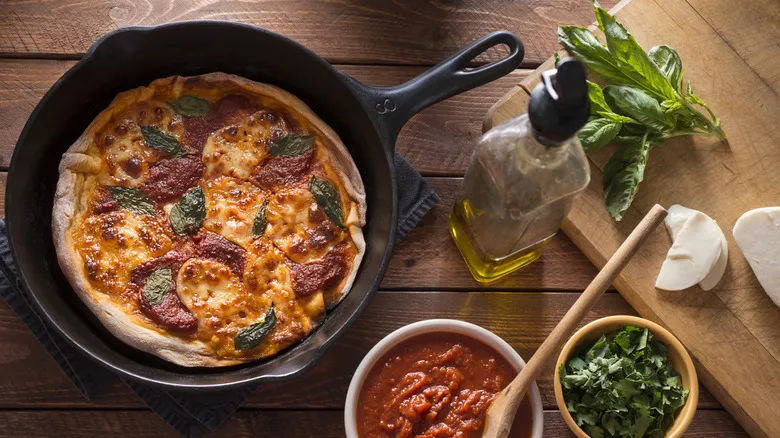
Regrettably, the evaporation of aromatic oils isn't the only issue to consider when baking. Fresh herbs are particularly fragile and can easily scorch. This is especially true for thin-leaved varieties like basil, mint, dill, cilantro, and parsley. Their high oil content also makes them more prone to retaining heat, which heightens the risk of burning. This not only renders their use ineffective but can also negatively impact your dish. Julia Chebotar notes, "Herbs burn easily because their delicate oils and leaves are sensitive to prolonged exposure to heat, resulting in a bitter flavor."
To make matters worse, the scent of charred herbs can linger for quite some time, which is far from enjoyable. Therefore, if you plan to use fresh herbs without encasing them in a protective dough or filling, you'll need to keep a close watch on them. This may require some trial and error as you learn to bake with fresh herbs, but you'll soon become adept at taking the necessary precautions. For example, after adding basil to the top of a pizza or focaccia, it’s beneficial to turn on the oven light and monitor the herbs closely. This way, you can remove them before they burn.
Add herbs to batters and dough at the right time
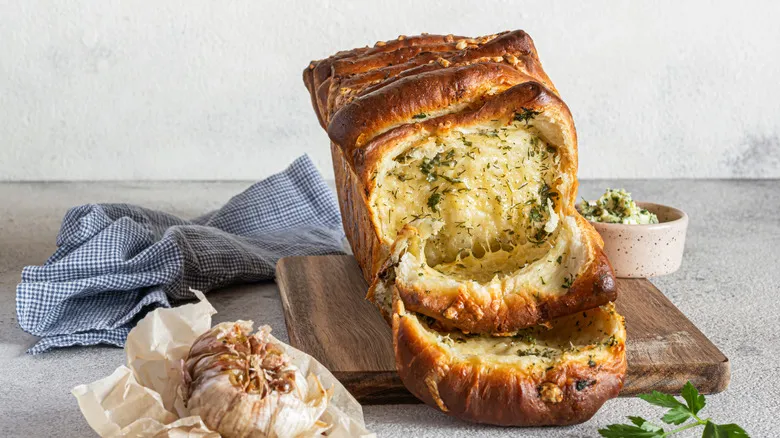
"Timing and application are crucial when incorporating fresh herbs into baking," explains Jessie-Sierra Ross. "For a burst of flavor, it's ideal to add delicate green herbs like cilantro, basil, parsley, and dill into a filling, batter, or dough early on. This allows their flavor to disperse evenly while protecting them from burning." To prevent bruising, introduce these delicate herbs as soon as your dough or batter is mixed, and save them for baked items that require shorter baking times, such as pizza or muffins.
"Hardier herbs like rosemary, thyme, and oregano can withstand longer cooking times and higher temperatures without losing their flavor," she notes. This makes them perfect for more robust baked goods like sourdough, focaccia, shortbread, or biscuits. She advises adding herbs gently, either by folding them in with a rubber spatula or using your hands. According to Alex Mazzucca and Cara Duerr, woody herbs should be finely chopped and mixed in with the dry ingredients: "This ensures they are evenly distributed throughout your final product."
Additionally, there are other methods to enhance the flavor beyond simply adding the herbs. "To boost the taste, you can first rub the herbs with a pinch of sugar or salt before mixing them in," suggests Julia Chebotar. Just combine the herbs with the granules and rub them together. "The oils from the herbs will infuse the sugar," Ross clarifies. "Afterward, you can discard the stems or leaves."
Use fresh herbs as a garnish
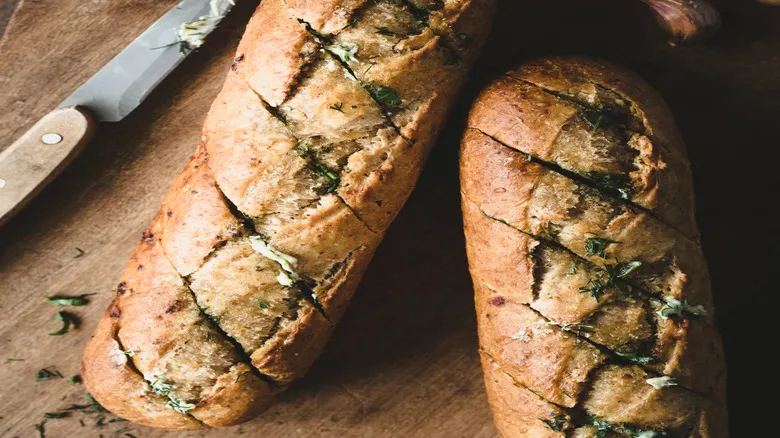
Fresh herbs truly excel as garnishes, where their vibrant colors and aromatic scents can elevate even the simplest dish (or, in the case of impressive creations like Alex Mazzucca and Cara Duerr's lavender blueberry layer cake, something more extravagant). "When using herbs as a garnish, you can finely chop them and sprinkle them over your dish, or get creative by incorporating them into herb-infused oils or aiolis," the chefs suggest.
Julia Chebotar emphasizes that fresh herbs should be lively and intact when used as garnishes. "A sprig of rosemary adds a rustic flair, torn basil leaves provide a fragrant touch, and edible flowers like chive blossoms offer a burst of color." The aim is to enhance the dish both visually and aromatically, so choose wisely.
Jessie-Sierra Ross enjoys using hand-torn basil, parsley, and chives as garnishes for pizza or savory tomato tarts. "You can also prepare a quick chimichurri sauce with fresh parsley, cilantro, and oregano to accompany your next loaf of crusty bread," she suggests, while sugared rosemary pairs beautifully with sweet treats. To create it, "Wash and dry several fresh rosemary sprigs, then coat them in a simple syrup made from equal parts sugar and water, boiled for 5 minutes." Remove the rosemary stems and, while still wet, gently roll them in a plate of sugar. "These sprigs will develop a lovely sparkling crystal appearance once dried!"
Don't confine yourself to savory foods
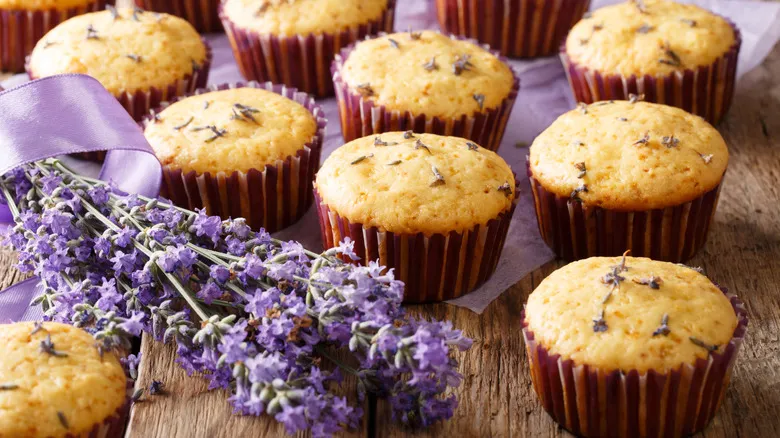
Herbs can add a delightful touch to many sweet baked treats. Examples include lavender shortbread, thyme cake, and minty fruit crumbles. Their strong flavors often balance the sweetness from fruits and sugar, introducing a layer of complexity to muffins, cookies, cakes, and sweet breads, much like how savory ingredients such as nuts do. However, it's important to exercise caution with these bold flavors. When you're starting to cook with fresh herbs, it's wise to consult online recipes to ensure you get the right proportions, as those potent oils can quickly become overwhelming.
Just as with savory dishes, it's essential to maintain a harmonious flavor balance when baking sweets. Lavender and basil pair beautifully with sugar and other typical pastry flavors, but they are not interchangeable. When substituting herbs, such as replacing basil, opt for plants or blends that share a similar flavor profile, much like you would when making a soup or stew.
Additionally, herb leaves aren't the only way to infuse flavor into your baked goods. Julia Chebotar suggests, "Don't hesitate to experiment with herb-infused oils or syrups to subtly elevate your baking. You might also consider using herb flowers like thyme blossoms or dill flowers, as they can provide a delicate, unexpected burst of flavor and visual appeal."
Substitute fresh herbs for dried correctly

"Getting accurate measurements can be challenging when replacing dried herbs with fresh ones," says Jessie-Sierra Ross. "Fresh herbs are bulkier than their dried forms because they retain their structure and contain moisture."
If you're planning to use fresh herbs in a recipe to boost flavor, it's important to use the correct ratios. You need significantly more fresh herbs than dried to achieve the same intensity of flavor. Fortunately, there's a simple guideline: "As a general rule, use three times the amount of fresh herbs compared to dried," explains Julia Chebotar. "For example, if a recipe requires 1 teaspoon of dried thyme, you should use 1 tablespoon of fresh thyme." Another straightforward way to remember this, according to Ross, is that 1 teaspoon of dried herbs is equivalent to 1 tablespoon of fresh. Additionally, Chebotar advises that because fresh herbs have more subtle flavors, they should be added later in the cooking process.
If you opt for dried herbs instead of fresh, be sure to store them in jars with tight-fitting lids. Keep them away from heat, light, and moisture to prevent the loss of volatile oils and flavor over time. With proper care, dried herbs can last between one to three years. While spice racks are popular (and this writer uses one as well), you can prolong the shelf life of herbs by storing them in a dark place, such as a drawer, pantry, or cabinet.
Recommended

Bread Pudding Gets An Autumn Upgrade With One Simple Swap
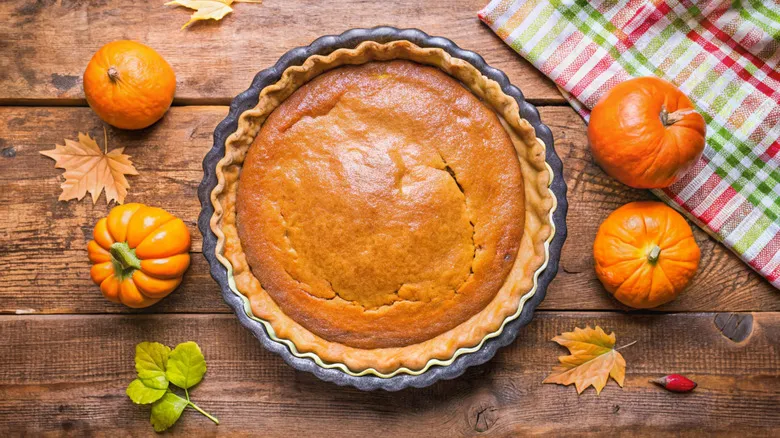
Pumpkin Pie Is Great, But Caramel Makes It Even Better

Gingerbread Men Cookies Date Back To The Time Of Shakespeare
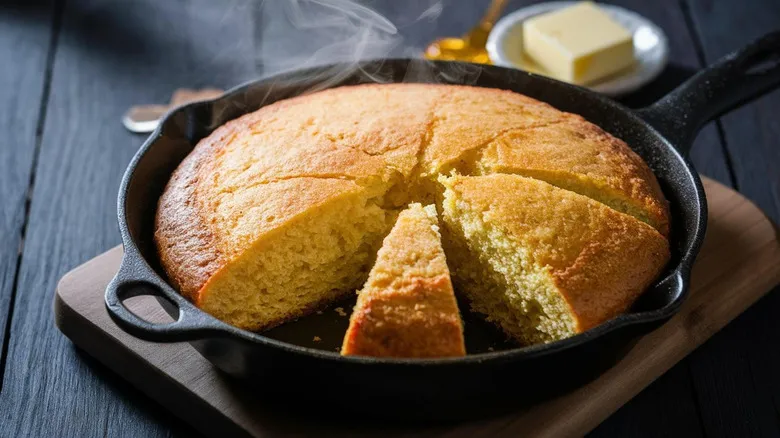
Give Cornbread A Salty, Crunchy Twist With This Store-Bought Snack
Next up

